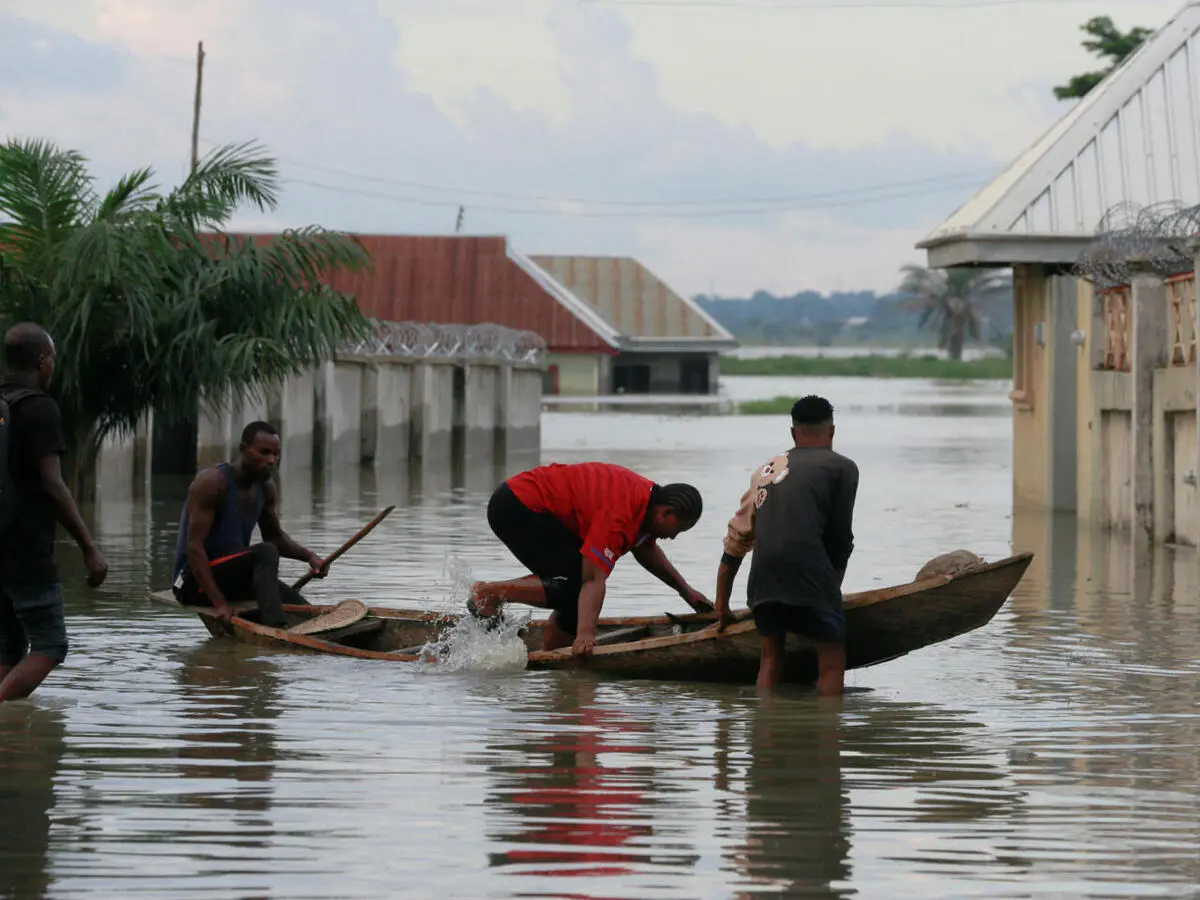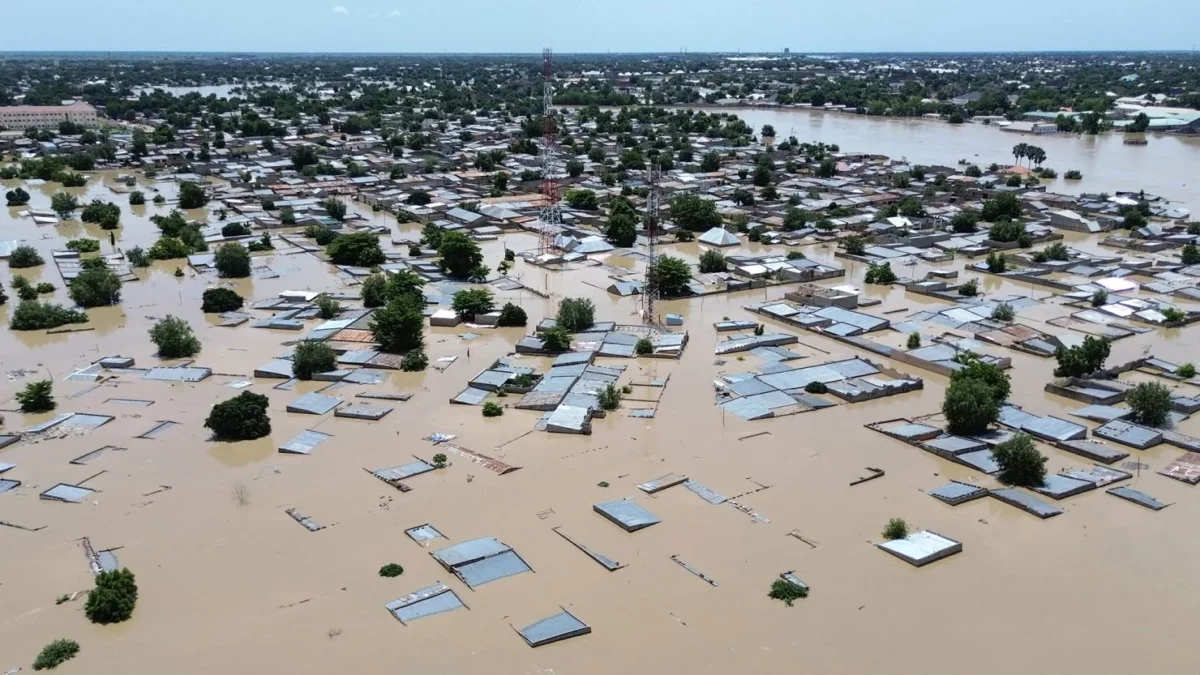Torrential floods have submerged entire neighborhoods, displaced hundreds of thousands of people, and unleashed a wave of desperation, as well as zoo animals, into the streets in north-eastern Nigeria’s Borno State.
The floodwaters, which have claimed at least 30 lives, hit earlier this week after the Alau Dam, located just outside the regional capital Maiduguri, burst its banks.
The dam’s failure sent a wall of water racing across the region, causing catastrophic destruction. Over a million people have been affected, with about 200,000 forced to flee their homes.
A Region in Crisis
Flooding is not unusual in northern Nigeria, but officials say that Maiduguri is experiencing its worst flooding in three decades. The surge of water has turned homes into islands, and even hospitals, like the University of Maiduguri Teaching Hospital, have not been spared.

The 1,305-bed facility, the largest in the region, has been crippled by the flood. Its lower levels are waterlogged, sewage systems compromised, and power is out—forcing doctors to suspend new admissions and restrict emergency care to the upper floors.
Authorities are desperately scrambling to rescue thousands of others feared trapped in their homes. Military trucks and boats have been deployed in the rescue operations, but the effort has been fraught with complications.
Among the many recovered bodies is that of baby Humayrah, who died after the boat her family was using to escape capsized. Rescue workers continue to search for the missing, but hope dwindles with each passing day.
The humanitarian situation is compounded by the region’s long-standing conflict. Maiduguri sits at the heart of a brutal 15-year insurgency led by the extremist group Boko Haram.
Millions of people, already displaced by the violence, have been living in camps. These makeshift settlements, designed to shelter those fleeing war, are ill-prepared for the new threat posed by the floodwaters.
Damaged Infrastructure, Escaped Wildlife
The Alau Dam, which was designed in 1986 to assist with irrigation and flood control, has long been a source of concern. This is not the first time it has failed—similar disasters occurred in 1994 and again in 2012, both leading to devastating floods in Maiduguri.
The dam’s rupture this week, caused by an overwhelming surge of rainfall during Nigeria’s rainy season, is yet another reminder of the region’s fragile infrastructure. Experts fear that in a changing climate, the region could see more frequent and severe flood events.
Along with the floodwaters, a new danger lurks—escaped wildlife. The Sanda Kyarimi Park Zoo, also located in Maiduguri, was decimated by the rising water levels.
Zoo authorities report that 80 percent of the animals were either killed or swept into the surrounding neighborhoods. Some of these animals, including crocodiles and snakes, pose a deadly threat to people wading through the floodwaters.
In a statement issued after the floods, officials from the zoo urged residents to remain vigilant, as deadly animals could now be roaming free.
Videos circulating on social media show an ostrich darting through city streets, adding a surreal, almost apocalyptic element to the already grim situation. Residents fear that lions and hyenas may also be among the animals that escaped.
A Long Road to Recovery
Beyond the immediate danger posed by the floods, there is rising concern over the spread of disease. Damaged septic tanks, contaminated water supplies, and flooded graveyards have created a breeding ground for waterborne illnesses.
Authorities are racing against time to contain outbreaks and provide shelter for the displaced, but resources are stretched thin. Humanitarian agencies that once focused on helping those displaced by Boko Haram are now grappling with the dual crises of flood and conflict.
Read Also: Ruto Launches Project to Clean Nairobi River in 1 Year
















